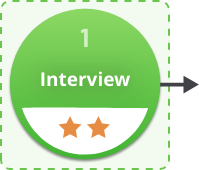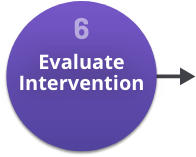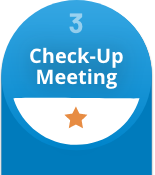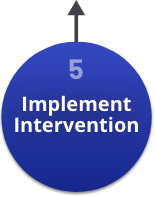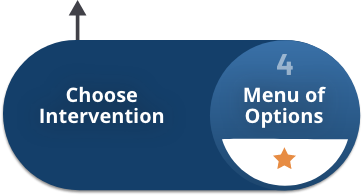Procedure: Interview
Coaching Process > Interview
In the first meeting with the teacher, you will conduct a Getting to Know You Interview. As the name implies, it is for you to learn more about the teacher both professionally and personally. The first meeting sets the stage for the entire coaching relationship and for gathering information about the classroom. Typically, the meeting lasts between 30 to 45 minutes; ideally, it occurs in one setting but can be spread across two meetings if needed given the constraints on a teacher’s time.
There are five elements to an effective interview:
How To
Conducting the Getting to Know You Interview
Opening the Meeting
Begin by explaining the purpose of your meeting and the structure of the Double Check CCU process. Indicate that you will collect information from the teacher during this meeting and that you will also visit their classroom to collect more information during the coming week. Following your classroom visits, you will set up a second meeting, ideally, within two to three weeks after the first meeting. This is when you will share the information you gathered and help the teacher develop a plan based on that feedback.
My role is to support you in any way that you find helpful in building your classroom management skills and improving the climate and culture of your classroom environment. Today, I’m going to ask you some questions about your background and your current practices and ask you to fill out some forms. I’ll come visit your classroom about three times to observe and collect data and then we will find a time to meet so I can share with you what I have learned. At that time, we can decide what, if anything, you would like to work on together.
Interview Guide

Using Effective Listening Skills
- Open-ended questions: These are questions that require more than a single word response (like yes or no). Open-ended questions are a primary tool for eliciting change talk in motivational interviewing.
- Affirmations: These are verbal or non-verbal behaviors that convey acceptance, support, and encouragement for the teacher.
- Reflections: These are statements (not questions) that paraphrase comments made by the teacher. Simple reflections may repeat or rephrase what the teacher said. More complex reflections involve guessing at intended meanings or implied feelings.
- Summaries: These are two- or three-sentence responses that try to link together a series of big ideas that were expressed during earlier parts of a conversation or that serve as a transition to another topic.
Honing Your Skills
The following video provides an example of a Getting to Know You Interview. Watch this brief interview and then answer the self-reflection questions below.
| Ideally, the coach is comfortable with silence and allows space and time for the teacher to reflect on the questions. Even in brief interactions, it is important to appear calm and patient and not to rush the pace of the conversation. |
| He nodded his head, he made eye contact, he leaned forward, he repeated things back to the teacher that were said, and he asked clarifying questions. |
| The coach is relaxed and sits in close proximity to the teacher. He smiles and nods his head. His tone of voice is calm and reassuring. |
Values Card Sort Steps:
- Print the Values Card Sort procedure and 20-30 value statements in advance of the first meeting with the teacher. Add any additional values you think would be important to your work with the teacher.
- During the Getting to Know You Interview, ask the teacher to sort the cards into three piles:
-
-
Pile 1 = Very Important Pile 2 = Important Pile 3 = Less Important 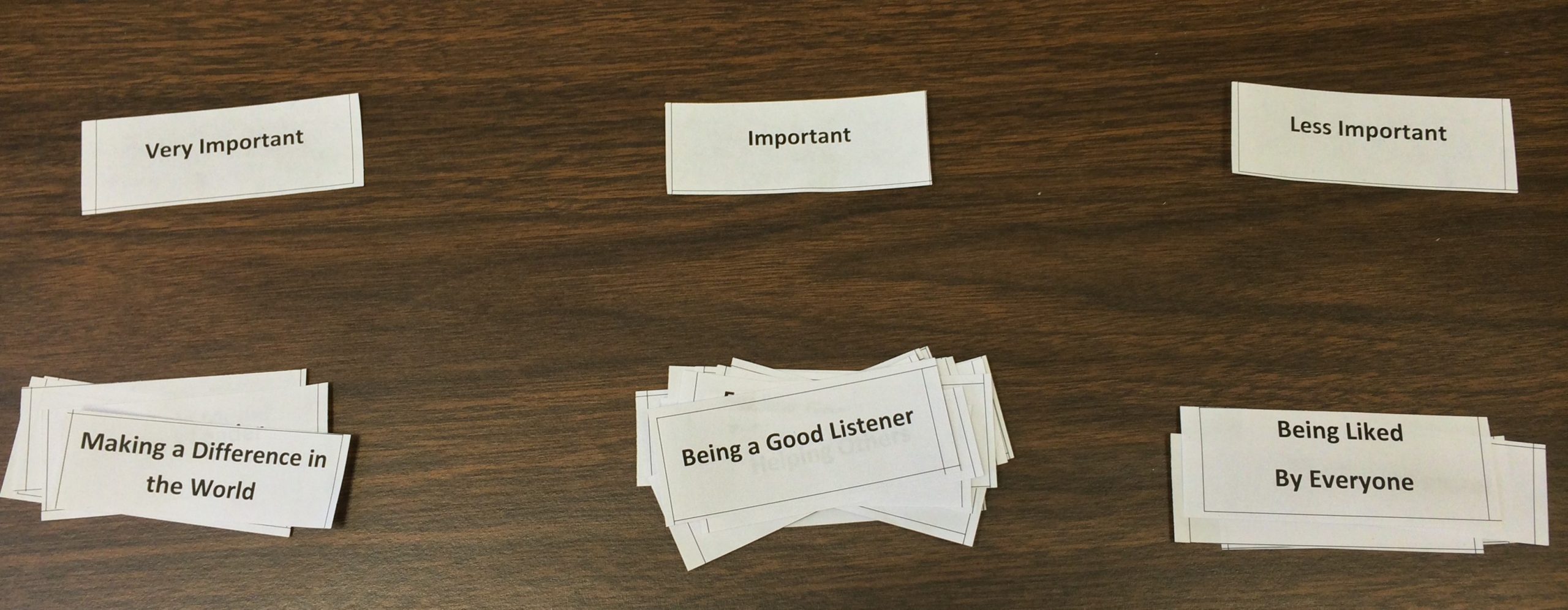
-
-
- After the teacher has completed the initial sorting of the values cards, ask them to choose the three most important values from the Very Important pile.
- Invite the teacher to discuss why they chose these three values as their most important ones.
- Write down the values and keep in mind the discussion of why the teacher selected these values in future meetings and discussions with the teacher.
- When do I do it? You can conduct the card sorting activity at any point during the first interview. Typically, it is done after the first set of interview questions about teacher experiences and background.
- How long does it take? The Card Sort usually takes 5-10 minutes to complete depending on the length of the follow-up discussion.
- Why should I do it? Discussing values is a way to learn a lot about a person in a short period of time. Most teachers find it very engaging and challenging. The Card Sort often evokes strong emotions, passions, and interest in changing, growing, and learning. Don’t be surprised if the teacher becomes emotional when discussing their values, as this activity taps into important ideologies for individuals.
- What is my role? Your task is simply to listen to what the teacher says, reflect back what you hear, ask clarifying questions as needed, and validate what you hear (e.g., “That makes perfect sense,” “I can see why that is so important to you”).
Example:
Reflection & Tips:
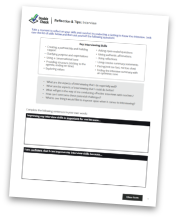
References to Other Relevant Resources:
Herman, K. C., Reinke W. M., Frey, A., & Shepard, S. (2014). Motivational Interviewing in Schools: Strategies for Engaging Parents, Teachers, and Students. New York: Springer
Reinke, W., Herman, K., & Sprick, R. (2011). Motivational interviewing for effective classroom management: The classroom check-up. New York, NY: Guilford Press.
